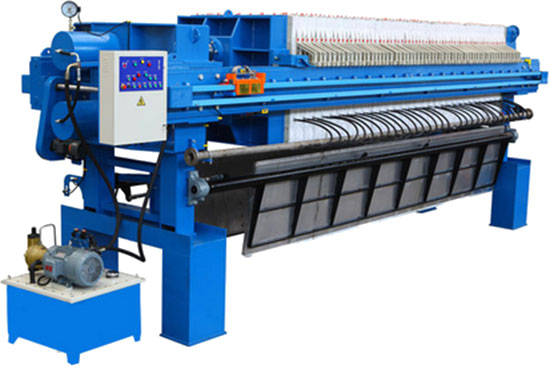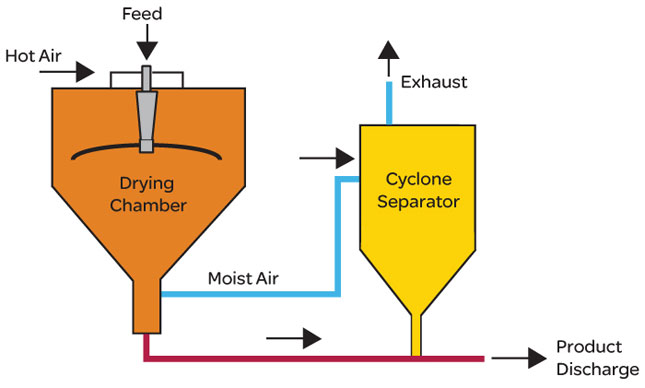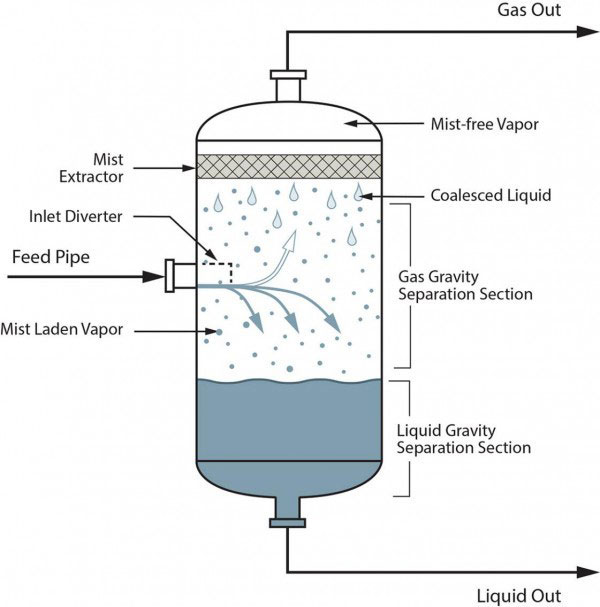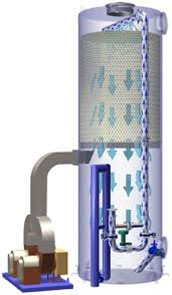
Heat Exchanger
 A heat exchanger is a device used to transfer heat between one or more fluids. The fluids may be separated by a solid wall to prevent mixing or they may be in direct contact. They are widely used in space heating, refrigeration, air conditioning, power stations, chemical plants, petrochemical plants, petroleum refineries, natural-gas processing, and sewage treatment.
A heat exchanger is a device used to transfer heat between one or more fluids. The fluids may be separated by a solid wall to prevent mixing or they may be in direct contact. They are widely used in space heating, refrigeration, air conditioning, power stations, chemical plants, petrochemical plants, petroleum refineries, natural-gas processing, and sewage treatment.
 A heat exchanger is a device used to transfer heat between one or more fluids. The fluids may be separated by a solid wall to prevent mixing or they may be in direct contact. They are widely used in space heating, refrigeration, air conditioning, power stations, chemical plants, petrochemical plants, petroleum refineries, natural-gas processing, and sewage treatment.
A heat exchanger is a device used to transfer heat between one or more fluids. The fluids may be separated by a solid wall to prevent mixing or they may be in direct contact. They are widely used in space heating, refrigeration, air conditioning, power stations, chemical plants, petrochemical plants, petroleum refineries, natural-gas processing, and sewage treatment.Filter Press
 A filter press is a tool used in separation processes, specifically in solid/liquid separation using the principle of pressure drive, provided by a slurry pump. The filter press is used in fixed-volume and batch operations, which means that the operation must be stopped to discharge the filter cake before the next batch can be started. The major components of a filter press are the skeleton and the filter pack. The skeleton holds the filter pack together while pressure is being developed inside the filtration chamber. The chamber however can only hold a specific volume of solids.
A filter press is a tool used in separation processes, specifically in solid/liquid separation using the principle of pressure drive, provided by a slurry pump. The filter press is used in fixed-volume and batch operations, which means that the operation must be stopped to discharge the filter cake before the next batch can be started. The major components of a filter press are the skeleton and the filter pack. The skeleton holds the filter pack together while pressure is being developed inside the filtration chamber. The chamber however can only hold a specific volume of solids.
 A filter press is a tool used in separation processes, specifically in solid/liquid separation using the principle of pressure drive, provided by a slurry pump. The filter press is used in fixed-volume and batch operations, which means that the operation must be stopped to discharge the filter cake before the next batch can be started. The major components of a filter press are the skeleton and the filter pack. The skeleton holds the filter pack together while pressure is being developed inside the filtration chamber. The chamber however can only hold a specific volume of solids.
A filter press is a tool used in separation processes, specifically in solid/liquid separation using the principle of pressure drive, provided by a slurry pump. The filter press is used in fixed-volume and batch operations, which means that the operation must be stopped to discharge the filter cake before the next batch can be started. The major components of a filter press are the skeleton and the filter pack. The skeleton holds the filter pack together while pressure is being developed inside the filtration chamber. The chamber however can only hold a specific volume of solids.Hydrocyclone


A hydrocyclone (often referred to by the shortened form cyclone) is a device to classify, separate or sort particles in a liquid suspension based on the ratio of their centripetal force to fluid resistance. This ratio is high for dense (where separation by density is required) and coarse (where separation by size is required) particles, and low for light and fine particles. Hydrocyclones also find application in the separation of liquids of different densities.
A hydrocyclone will normally have a cylindrical section at the top where liquid is being fed tangentially, and a conical base. The angle, and hence length of the conical section, plays a role in determining operating characteristics.
Spray Drying
 Spray drying is a method of producing a dry powder from a liquid or slurry by rapidly drying with a hot gas. This is the preferred method of drying of many thermally-sensitive materials such as foods and pharmaceuticals. A consistent particle size distribution is a reason for spray drying some industrial products such as catalysts. Air is the heated drying medium. All spray dryers use some type of atomizer or spray nozzle to disperse the liquid or slurry into a controlled drop size spray. The most common of these are rotary disk and single-fluid high pressure swirl nozzles. Atomizer wheels are known to provide broader particle size distribution, but both methods allow for consistent distribution of particle size. Alternatively, for some applications two-fluid or ultrasonic nozzles are used. Depending on the process needs, drop sizes from 10 to 500 micrometre can be achieved with the appropriate choices. The most common applications are in the 100 to 200 micrometre diameter range. The dry powder is often free-flowing.
Spray drying is a method of producing a dry powder from a liquid or slurry by rapidly drying with a hot gas. This is the preferred method of drying of many thermally-sensitive materials such as foods and pharmaceuticals. A consistent particle size distribution is a reason for spray drying some industrial products such as catalysts. Air is the heated drying medium. All spray dryers use some type of atomizer or spray nozzle to disperse the liquid or slurry into a controlled drop size spray. The most common of these are rotary disk and single-fluid high pressure swirl nozzles. Atomizer wheels are known to provide broader particle size distribution, but both methods allow for consistent distribution of particle size. Alternatively, for some applications two-fluid or ultrasonic nozzles are used. Depending on the process needs, drop sizes from 10 to 500 micrometre can be achieved with the appropriate choices. The most common applications are in the 100 to 200 micrometre diameter range. The dry powder is often free-flowing.
 Spray drying is a method of producing a dry powder from a liquid or slurry by rapidly drying with a hot gas. This is the preferred method of drying of many thermally-sensitive materials such as foods and pharmaceuticals. A consistent particle size distribution is a reason for spray drying some industrial products such as catalysts. Air is the heated drying medium. All spray dryers use some type of atomizer or spray nozzle to disperse the liquid or slurry into a controlled drop size spray. The most common of these are rotary disk and single-fluid high pressure swirl nozzles. Atomizer wheels are known to provide broader particle size distribution, but both methods allow for consistent distribution of particle size. Alternatively, for some applications two-fluid or ultrasonic nozzles are used. Depending on the process needs, drop sizes from 10 to 500 micrometre can be achieved with the appropriate choices. The most common applications are in the 100 to 200 micrometre diameter range. The dry powder is often free-flowing.
Spray drying is a method of producing a dry powder from a liquid or slurry by rapidly drying with a hot gas. This is the preferred method of drying of many thermally-sensitive materials such as foods and pharmaceuticals. A consistent particle size distribution is a reason for spray drying some industrial products such as catalysts. Air is the heated drying medium. All spray dryers use some type of atomizer or spray nozzle to disperse the liquid or slurry into a controlled drop size spray. The most common of these are rotary disk and single-fluid high pressure swirl nozzles. Atomizer wheels are known to provide broader particle size distribution, but both methods allow for consistent distribution of particle size. Alternatively, for some applications two-fluid or ultrasonic nozzles are used. Depending on the process needs, drop sizes from 10 to 500 micrometre can be achieved with the appropriate choices. The most common applications are in the 100 to 200 micrometre diameter range. The dry powder is often free-flowing.Vapor-liquid Separator
 A vapor-liquid separator is a device used in several industrial applications to separate a vapor-liquid mixture. In low gravity environments such as a space station, a common liquid separator will not function because gravity is not usable as a separation mechanism. In this case, centrifugal force needs to be utilized in a spinning centrifugal separator to drive liquid towards the outer edge of the chamber for removal. Gaseous components migrate towards the center.
A vapor-liquid separator is a device used in several industrial applications to separate a vapor-liquid mixture. In low gravity environments such as a space station, a common liquid separator will not function because gravity is not usable as a separation mechanism. In this case, centrifugal force needs to be utilized in a spinning centrifugal separator to drive liquid towards the outer edge of the chamber for removal. Gaseous components migrate towards the center.
 A vapor-liquid separator is a device used in several industrial applications to separate a vapor-liquid mixture. In low gravity environments such as a space station, a common liquid separator will not function because gravity is not usable as a separation mechanism. In this case, centrifugal force needs to be utilized in a spinning centrifugal separator to drive liquid towards the outer edge of the chamber for removal. Gaseous components migrate towards the center.
A vapor-liquid separator is a device used in several industrial applications to separate a vapor-liquid mixture. In low gravity environments such as a space station, a common liquid separator will not function because gravity is not usable as a separation mechanism. In this case, centrifugal force needs to be utilized in a spinning centrifugal separator to drive liquid towards the outer edge of the chamber for removal. Gaseous components migrate towards the center.Decarbonation (Decarbonator)
 Decarbonation is the process of free carbon dioxide removal from water. A decarbonator is a device using which reduction of carbon dioxide concentration in water is achieved by blowing air at CO2 distribution between the liquid (water) and gaseous (air) phases.
Decarbonation is the process of free carbon dioxide removal from water. A decarbonator is a device using which reduction of carbon dioxide concentration in water is achieved by blowing air at CO2 distribution between the liquid (water) and gaseous (air) phases.
